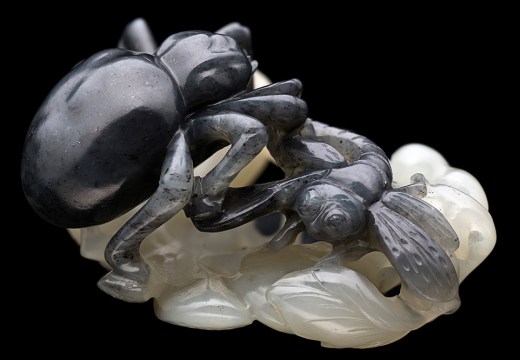From the September 2022 issue of Apollo. Preview and subscribe here.
French lessons at school made me hungry. The classroom had a poster that depicted the country as a great gathering of cheeses; a fantasy fromagerie in which every wheel and truckle, every pyramid of chèvre, denoted its place of origin. ‘How can anyone govern a country that has 246 varieties of cheese?’ Charles de Gaulle once joked. But here was a map that proposed, however playfully, that these unruly cheeses in fact gave form to France, that they somehow held together the vast territory as a nation. Not Rhine but rind defined its eastern border.
Gastronomic maps became a familiar genre in the early 20th century, and not least in France, as the proliferation of first the bicycle then the motor-car elicited a fast-growing interest in the French regions and their cooking. To tour the country properly meant eating the right dish in the right place (which is how the tyre company Michelin came to be the arbiter of good restauration). Pre-war guide-books often included maps marking out local delicacies in the form of pictograms or as dense lists printed alongside the toponymic labels for towns or regions. In Édouard Dulac’s Le Tour de France Gastronomique (1926) the carte routière for each region is mocked up as a treasure chart with frayed edges: fish stand in for sea monsters, geese for dragons.
Such maps would later become a staple of postcards and tea towels, on sale in every souvenir shop across the country. Their prototype long predates the advent of modern tourism, however. The Carte gastronomique de la France, as it is headed, first appeared as a foldout illustration to C.L. Cadet de Gassicourt’s Cours Gastronomique (1809), a book that ranges across culinary subjects as it imagines the induction of a parvenu from the provinces into the epicurean ways of Paris. To facilitate the young man’s understanding of the provenance of ingredients, a friend draws up an ‘atlas gourmand’ of France for him, accompanied by a legend – printed in full in the text – of places and their corresponding specialities. In practice, these were unprecedented ways of presenting information to sophisticated readers.
This map is an extraordinary, beguiling document – not least because of its scale, unfolding to a width of more than 50cm from an octavo-sized volume. It must have seemed even more so to an audience for whom this mode of cartography was entirely novel. Two thirds of the sheet are given over to a diagram of France, populated with concise images of game and grazing live- stock: of fish, poultry and charcuterie; of eau de vie stills, wine bottles and barrels. They dwarf, even ridicule, the uniform symbols that mark the towns and cities. At Laon, for instance, the stem and head of an artichoke appear in lieu of the famous towers of the cathedral. This is the nation conceived not as an imagined community or an anthology of landmarks, but as a self-sufficient land of plenty – at a time when France was fight- ing major wars on the Iberian peninsula and in central Europe.
The pictograms shrink around Paris, even if miniatures of crayfish, barbel, carp and eel escort the Seine as it snakes through the hinterland of the city. This is ironic, since the map fundamentally depicts France as the larder of Paris, emphasising foodstuffs that were reared, harvested or processed in the provinces for use in the kitchens of the capital. That it encapsulates Parisian appetites is made clear by the comic cartouche on the left-hand side of the sheet: a podgy lad stands atop the Grotte d’epicure, a cave inscribed with the names of notable Parisian gourmands. Inside, a table is set for the Caveau Moderne, a dining society that met monthly at a restaurant on Rue Montorgueil, and to which Cadet de Gassicourt belonged. The figure holds a giant elliptical wafer or biscuit bearing the title of the map, which he has already started to gobble.
Even so, the Carte gastronomique anticipated the recognition of French regional cooking as a category distinct from the haute cuisine, nouvelle cuisine and cuisine bourgeoise of 18th-century French culinary theory. Its engraver, Jean François Tourcaty (1763–1830), had previously illustrated Manuel des Amphitryons, a treatise on carving and hospitality by the leading gastronomic commentator A.B.L. Grimod de la Reynière. Grimod, another member of the Caveau Moderne, had already begun to celebrate geographically specific produce and modes of food preparation in his writing.
If on initial publication the Carte gastronomique was more a survey of resources than a field map for foodies, its reissue in further books in ensuing decades, at a time when regional culinary identities were coming into greater focus, suggests that it gradually took on a more practical purpose. It became fashionable to know where your food came from, and perhaps to seek it out during agronomic, industrial or antiquarian excursions. But it would be another century before, as the food writer Anne Willan writes, ‘a new brigade of motorised cookery writers’ made the definitive case for French regional cooking – thanks, not least, to their ability ‘to track down a local speciality in every village inn’.
From the September 2022 issue of Apollo. Preview and subscribe here.
Unlimited access from just $16 every 3 months
Subscribe to get unlimited and exclusive access to the top art stories, interviews and exhibition reviews.














![Masterpiece [Re]discovery 2022. Photo: Ben Fisher Photography, courtesy of Masterpiece London](http://www.apollo-magazine.com/wp-content/uploads/2022/07/MPL2022_4263.jpg)
It’s time for the government of London to return to its rightful home